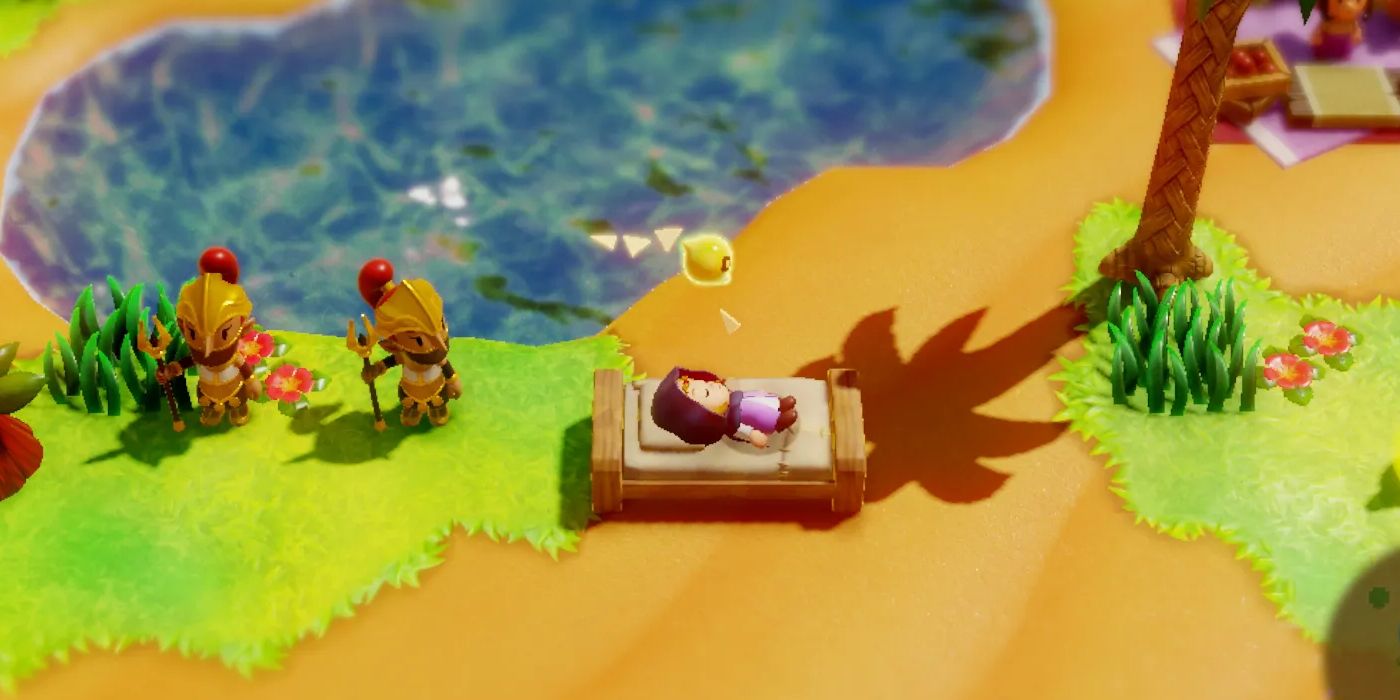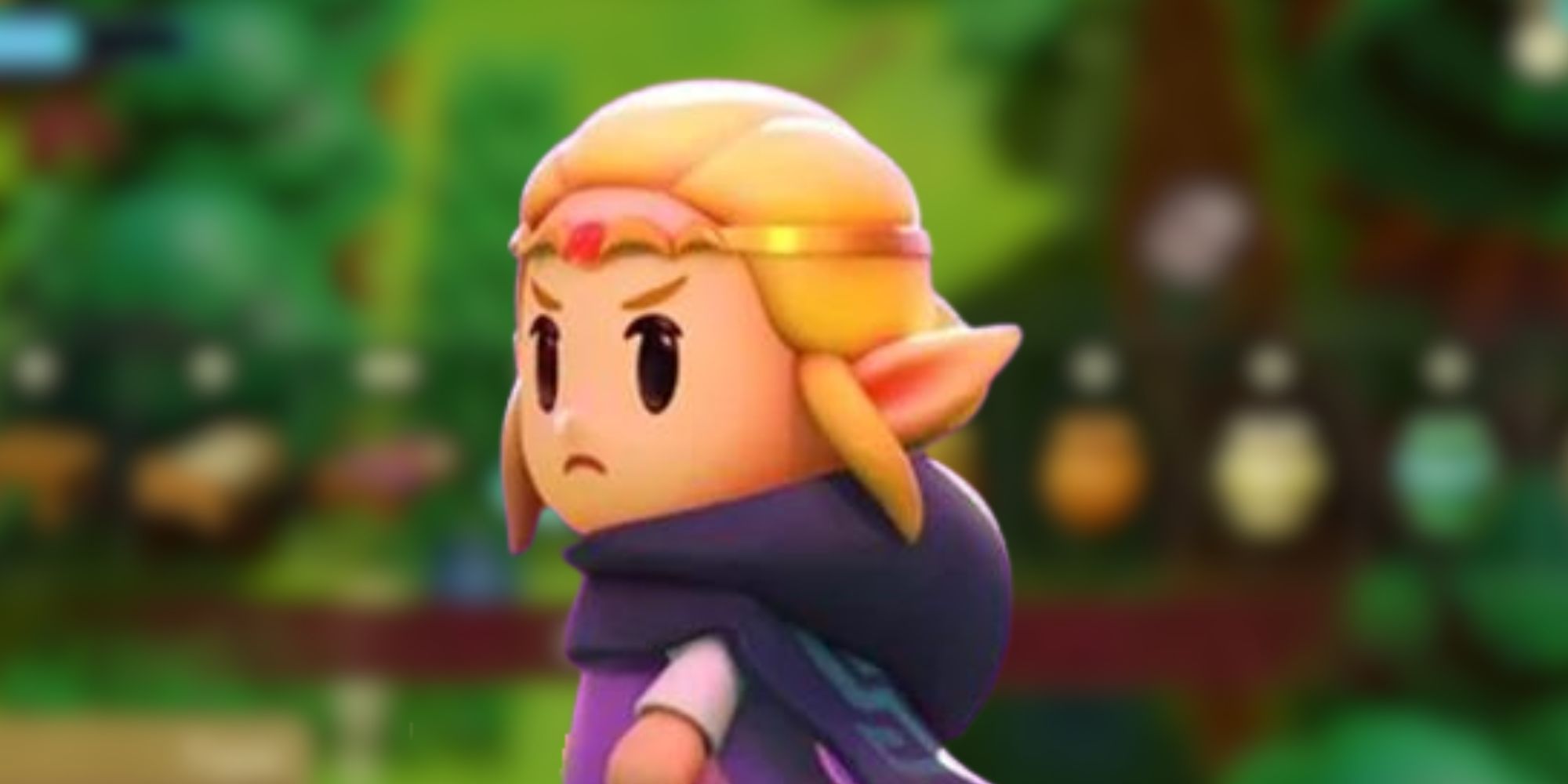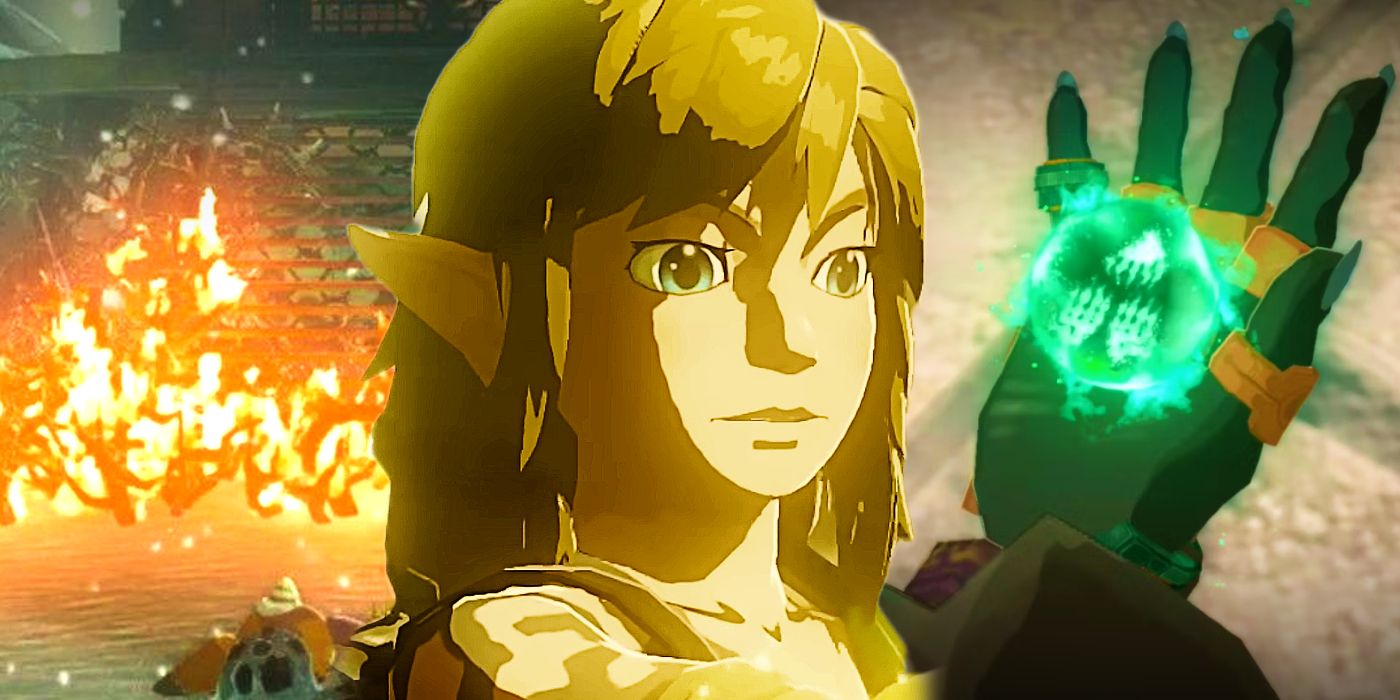Gameplay in recent Legend of Zelda titles has been largely defined by a small list of one-off mechanics, with Ultrahand and Echoes being prime examples of this. For better or worse, Tears of the Kingdom and Echoes of Wisdom both see their respective gimmick permeate every aspect of their games, but remain distinct even as other features have carried over from TOTK into EoW. As a result, with both titles arguably being amongst the very best Zelda games, it is only natural to consider which of these core mechanics is the better of the two in a direct comparison.
Fundamentally, both Echoes and Ultrahand serve as an outlet of creativity. Although the specifics naturally differ greatly, both features allow the person to achieve any given goal (be that overcoming environmental obstacles, solving puzzles, or defeating monsters) in a multitude of ways. It is clear that the future of the Zelda franchise will likely continue to place a strong emphasis on this philosophy, giving players as many choices and possibilities as possible in order to play a given game in their own unique way.
Pros & Cons Of Using Echoes In Echoes Of Wisdom
How Echoes Work
Using the Tri Rod, Princess Zelda is able to summon over 120 Echoes to aid her in her quest to save Hyrule. Naturally, this enormous number of items and monsters opens up a wide range of tactics to the player, accommodating practically any approach to a situation that one can think of. It is worth noting that many of these Echoes are effectively upgraded versions of earlier acquisitions, bringing with them improved power or other benefits. For example, the Old Bed Echo’s Healing benefits are outdone by more expensive versions, although it does remain useful as a platform.
When resting, the Old Bed Echo heals just half a heart at a time, whilst the Soft Bed heals a full heart and Zelda’s Bed heals two hearts.
However, this long list of Echoes does come with its drawbacks. For example, the larger Zelda’s library of Echoes becomes, the longer it can take to find a particular Echo. While Echoes of Wisdom does offer some useful filtering options for changing Echoes, gameplay can become frustratingly slowed if one tries to make use of a number of unusual Echoes in quick succession. The long list also means it is possible for choice paralysis to set in, although most players will be able to quickly devise some go-to strategies with a few favorite Echoes to cover the majority of situations.

Related
10 Best Echoes To Get Early In The Legend of Zelda: Echoes of Wisdom
With over 100 echoes to collect in The Legend of Zelda: Echoes of Wisdom, which are the best to get early on? Find out the 10 best early echoes here.
It is also worth noting that relying on Echo monsters in combat can prove frustrating. With each Echo only being only able to attack in a few preset ways, battles without a clear advantage in speed or strength can begin to drag on unless Zelda herself intervenes. This is something that is particularly notable against more agile monsters or Bosses, where Echoes may miss their attacks or deal little damage regardless. On the other hand, Echoes can act as excellent bodyguards and distractions for those same foes, giving people opportunities to attack with Zelda or time to formulate a plan.
Pros & Cons Of Using Ultrahand In TOTK
Ultrahand Is A Useful Feature
Ultrahand allows Link to freely manipulate much of his environment in Tears of the Kingdom, and the hero can use it to build a wide variety of machines to aid him in his quest. Much like Echoes, Ultrahand offers near-endless possibilities, a particularly entertaining prospect when considering the fact that the community has found many ways to break TOTK’s physics engine. Ultrahand also enables Link to solve puzzles and fight monsters remotely; by manipulating both custom-built contraptions and individual objects at a distance in three dimensions, the player has far more ranged options available to them than just a bow.
On the other hand, Ultrahand does have its issues. For example, if care isn’t taken, objects may be fixed together in unintended ways, resulting in an entire build having to be disassembled in order to correct the mistake; an effort slowed by the fact that Ultrahand only makes one connection at a time. Moreover, solving the puzzles geared towards Ultrahand generally requires little forethought despite the feature’s obvious potential. This simplified approach extends to TOTK always providing an assortment of perfectly-suited parts near any puzzle, which paradoxically discourages broader experimentation.

Related
Almost Everyone Hates This Zelda: TOTK Feature In Echoes Of Wisdom (& They’re Right)
Echoes of Wisdom has been well-loved by Zelda fans, but this repeated UI feature from TotK has proven a bit annoying.
In that vein, it is worth noting that the majority of TOTK’s most impressive builds are arguably over-engineered, and undeniably far more elaborate than any in-game task actually requires. Moreover, any given machine will also have all attached Zonai Devices active at once; this can curtail certain strategies, as certain parts may conflict with each other or otherwise cumulatively drain Link’s batteries far too quickly to be effective. The process of building and perfecting these more complex machines can also require very slow and painstaking effort, although the Autobuild ability does greatly accelerate the process of creating already-perfected designs.
Which Zelda Gameplay Gimmick Is Better & Why
There’s An Obvious Winner
Both Echoes and Ultrahand are rooted in creativity and freedom of expression, although they achieve this in very different ways. Echoes provide players with a vast array of tools to be used individually, whilst Ultrahand can assemble a relatively smaller pool of distinct parts in countless configurations. Both gimmicks have their associated limitations as well, from the choice of Echoes sometimes being overwhelming to the frustratingly fiddly nature of more complex Ultrahand builds.

Related
10 Unnecessarily Deadly Ultrahand Creations In Tears Of The Kingdom
Players are wreaking havoc in Zelda: Tears of the Kingdom with some extremely powerful Ultrahand builds, which even have bosses begging for mercy.
However, in a direct comparison, Ultrahand arguably has several advantages over Echoes. The mechanic allows for a more individualized creative approach, allowing those with the dedication to build ever-more complex contraptions. In comparison, Echoes are specialized, and at times the number of options can be more of a burden than an advantage. Although Echoes do allow for their own brand of Synergy, such as items distracting enemies whilst a monster moves in to attack, they also act firmly in accordance with Echoes of Wisdom’s pre-coded rules, as opposed to the physics-defying and sometimes unpredictable creations of Ultrahand.
The Echo mechanic is undeniably an incredibly versatile feature for players of Echoes of Wisdom to enjoy experimenting with. However, there are still some key ways in which Tears of the Kingdom’s own Ultrahand ability can outmatch it. Of course, plenty of Zelda fans may still prefer the more recent game’s gimmick to that of its predecessor, with the two titles’ differences fundamentally emphasizing different gameplay styles with their own unique appeals. Regardless, even as The Legend Of Zelda continues to innovate in future games, the endless possibilities of Ultrahand will doubtlessly continue to entertain for years to come.

